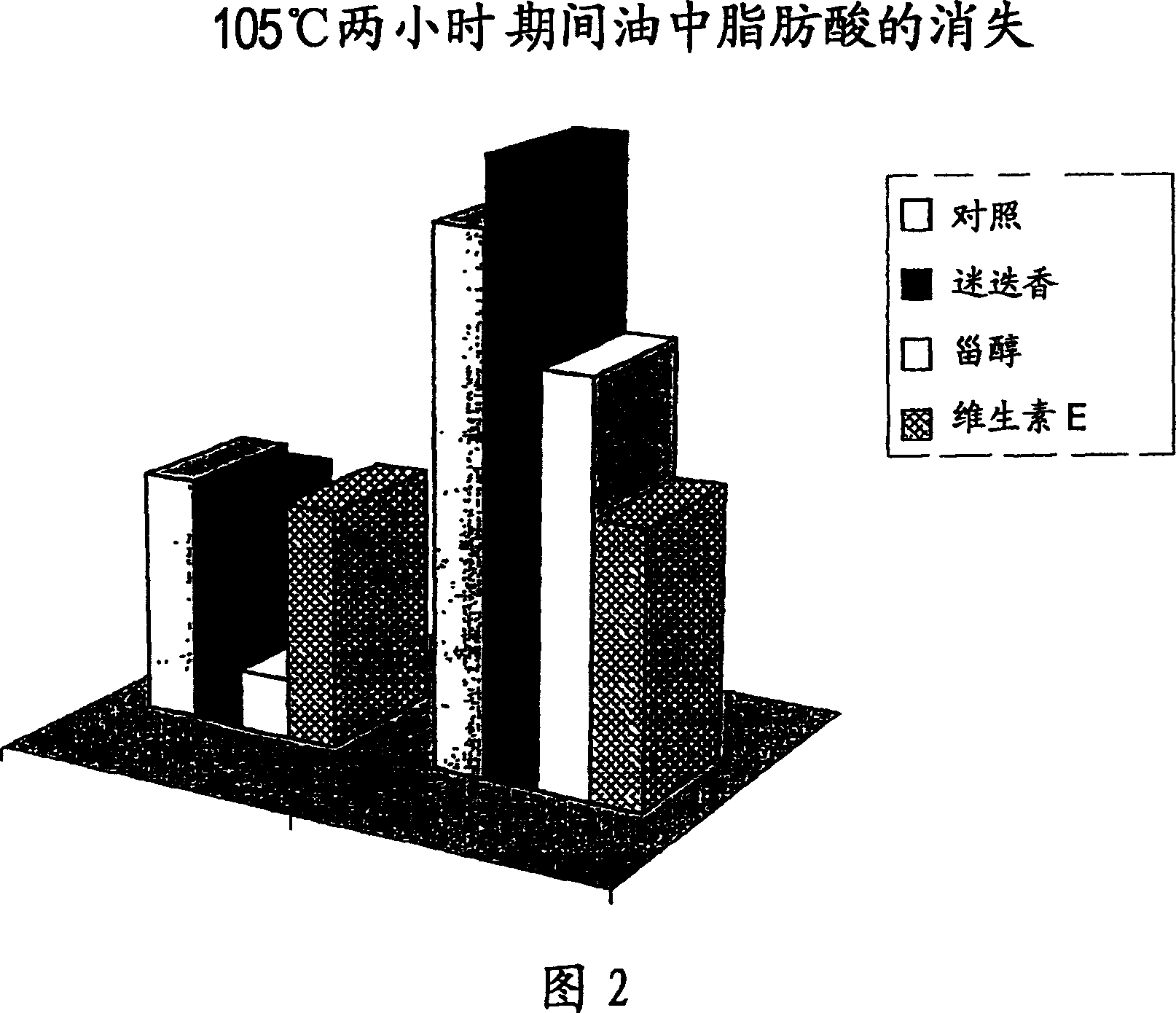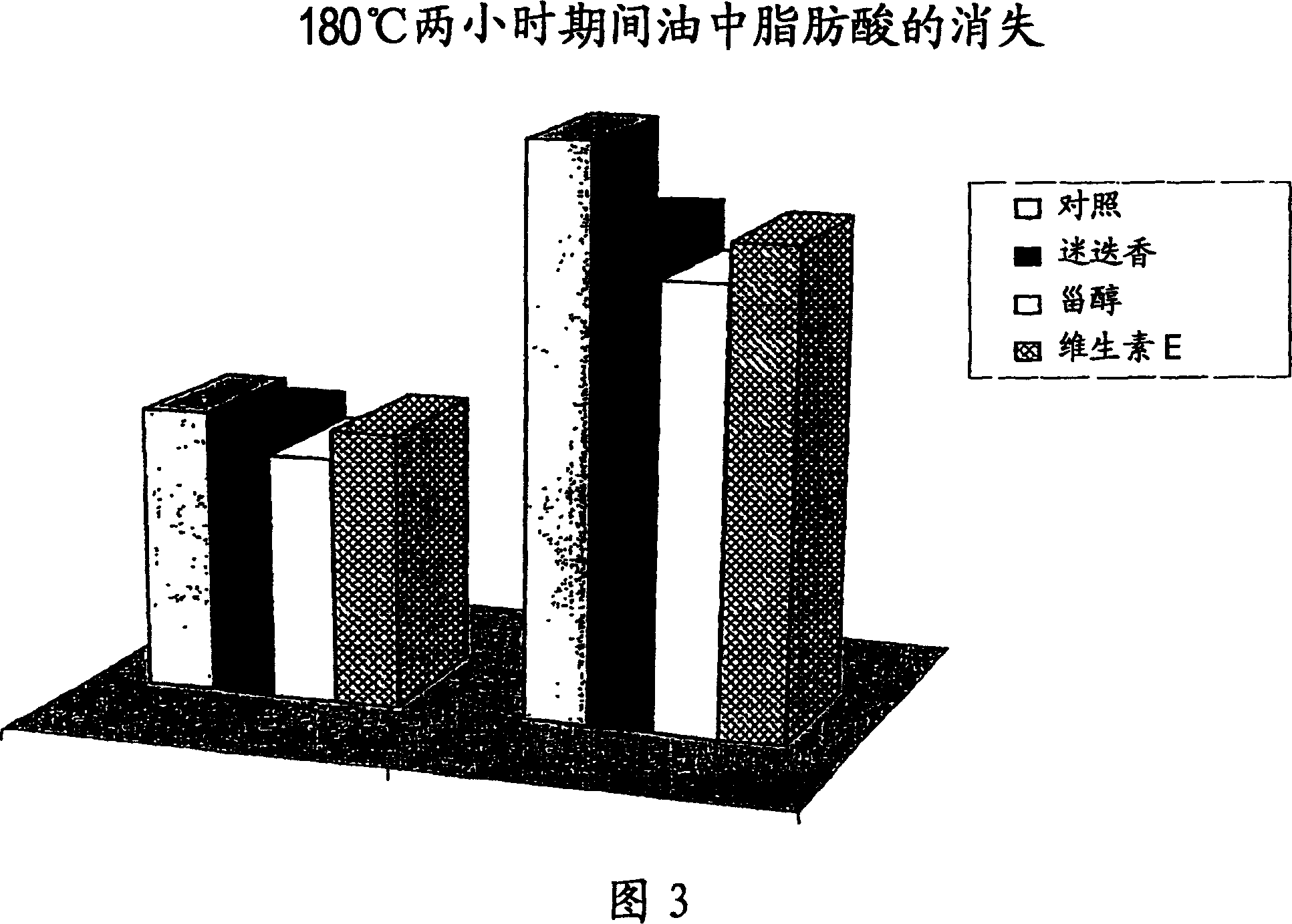Method of preservation of a food prodcut and composition comprising one or more phytosterols and/or phytostanols useful for this purpose
A technology for plant stanols and plant sterols is applied in the field of food storage and enhancement of food properties that are not consumed immediately after manufacturing or processing, and can solve problems such as unsatisfactory texture, consistency and taste, reduce microbial growth, The effect of reducing oxidation
- Summary
- Abstract
- Description
- Claims
- Application Information
AI Technical Summary
Problems solved by technology
Method used
Image
Examples
Embodiment 1
[0151] Example 1: Preparation of yoghurt containing microparticles of phytosterols and / or phytostanols will contain brassicasterol (14.5%), campestanol (2.4%), beta-sitosterol (50.9%) and sitostanol Alcohol (18.9%) phytosterol / stanol composition (hereinafter referred to as "Reducol TM ") was mixed with skimmed milk powder in a ratio of 1:7 to 1:8. About 6 L of milk mixture was made from whole milk, skimmed milk and milk powder containing Reducol. Using the Pearson square method (Hyde, KA and Rothwell, J. 1973, In Ice Cream, Churchill Livingstone Ltd., London U.K.) milk was standardized to contain 0.75-1% fat, 12-13% solids and 0.5-1% Reducol. The milk mixture was kept at room temperature for 30 minutes to allow The powdered milk was rehydrated and then homogenized using a commercially available Microfluidics Corporation, Newton, Mass. (USA) high-speed microfluidizer. Next, the milk was pasteurized at 69°C (156°F) for 30 minutes (batch / barrel), cool to 44°C, and store at that ...
Embodiment 2
[0153] Example 2: Preparation of herbal spreads / emulsions comprising microparticles of phytosterols and / or phytostanols
[0154] Blends of soybean oil and palm oil containing Reducol at a concentration of 50-80% can be used to form the emulsion. A small portion of hydrogenated vegetable oil (2-5%) can be added to achieve the desired texture. There are two possible types of emulsions: one is oil-in-water, which is preferred for forming low-fat spreads, and one is water-in-oil, which is preferred for some other applications. The emulsions are stabilized with suitable emulsifiers or stabilizers, such as lecithin, polysorbates and lactates. Thickening agents such as gums (xanthan gum, carob gum, guar gum, etc.), gelatin, pectin and agar may also be added. For coloring spreads, beta-carotene, caramel coloring and FD&C yellow dye can be used. In addition, the oily phase can also be concentrated with vitamins A and D or with essential polyunsaturated fatty acids.
[0155] The com...
Embodiment 3
[0164] Example 3: Preparation of cereal briquettes comprising phytosterol and / or phytostanol microparticles
[0165] The inventors have found that up to 27% (possibly more) of Reducol can be dispersed in fat. For the above reasons, cereal briquettes containing a fat-based binder have been investigated. In this example, Reducol was dispersed in fat to form a continuous emulsion. The fat component is then mixed with sugar and optional other components to form a binder suitable for maintaining the strength and elasticity of the cereal bar.
[0166] a) Adhesive
[0167] Typically, the fat-binder composition comprises about 20-85% w / w fat and 20-60% w / w carbohydrate in cereal bars. Mono- and diglycerides can be added up to 1% to improve the strength of cereal briquettes, but due to their relatively high melting point compared to triglycerides, they can only be used in smaller proportions. Optionally, various emulsifiers, film formers (such as sodium caseinate or alternatively o...
PUM
| Property | Measurement | Unit |
|---|---|---|
| particle diameter | aaaaa | aaaaa |
| melting point | aaaaa | aaaaa |
| melting point | aaaaa | aaaaa |
Abstract
Description
Claims
Application Information
 Login to View More
Login to View More - R&D
- Intellectual Property
- Life Sciences
- Materials
- Tech Scout
- Unparalleled Data Quality
- Higher Quality Content
- 60% Fewer Hallucinations
Browse by: Latest US Patents, China's latest patents, Technical Efficacy Thesaurus, Application Domain, Technology Topic, Popular Technical Reports.
© 2025 PatSnap. All rights reserved.Legal|Privacy policy|Modern Slavery Act Transparency Statement|Sitemap|About US| Contact US: help@patsnap.com



